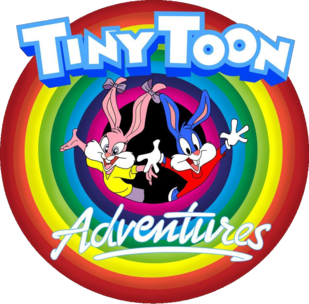
Tiny Toon Adventures is an American animated television series created by Tom Ruegger that was broadcast from September 14, 1990, to December 6, 1992. It was the first animated series produced by Steven Spielberg's Amblin Television in association with Warner Bros. Animation. The show follows the adventures of a group of young cartoon characters who attend Acme Looniversity to become the next generation of characters from the Looney Tunes series.

Yosemite Sam is a cartoon character in the Looney Tunes and Merrie Melodies series of short films produced by Warner Bros. His name is taken from Yosemite National Park in California. He is an adversary of Bugs Bunny and his archenemy alongside Elmer Fudd. He is commonly depicted as a mean-spirited and extremely aggressive, gunslinging outlaw or cowboy with a hair-trigger temper and an intense hatred of rabbits, Bugs in particular. In cartoons with non-Western themes, he uses various aliases, including "Chilkoot Sam" and "Square-deal Sam" in 14 Carrot Rabbit, "Riff Raff Sam" in Sahara Hare, "Sam Schultz" in Big House Bunny, "Seagoin' Sam" in Buccaneer Bunny, "Shanghai Sam" in Mutiny on the Bunny, "Von Schamm the Hessian" in Bunker Hill Bunny, "Baron Sam von Schpamm" in Dumb Patrol, and many others. During the golden age of American animation, Yosemite Sam appeared as antagonist in 33 animated shorts made between 1945 and 1964.

The Tasmanian Devil, commonly referred to as Taz, is an animated cartoon character featured in the Warner Bros. Looney Tunes and Merrie Melodies series of cartoons. Though the character appeared in only five shorts before Warner Bros. Cartoons shut down in 1964, marketing and television appearances later propelled Taz to new popularity in the 1990s.

Treasure Co., Ltd. is a Japanese video game developer based in Tokyo known for its action, platform, and shoot 'em up games. The company was founded in 1992 by former Konami employees seeking to explore original game concepts and free themselves from Konami's reliance on sequels. Their first game, Gunstar Heroes (1993) on the Sega Genesis, was a critical success and established a creative and action-oriented design style that would continue to characterize their output. Treasure's philosophy in game development has always been to make games they enjoy, not necessarily those that have the greatest commercial viability.

Tiny Toon Adventures is a platform video game for the NES. It was developed and published by Konami and released in 1991. It is the first Tiny Toon Adventures video game to be released for a video game console.

Tiny Toon Adventures: Plucky's Big Adventure is the third Tiny Toon Adventures-based game, developed by Warthog, published by Conspiracy Games and released on the PlayStation in North America on September 21, 2001, and in Europe on the following month.

Tiny Toon Adventures: Defenders of the Universe is a cancelled fighting game. Based on the Tiny Toon Adventures franchise, it was initially scheduled for release in mid-2002, but was cancelled for unknown reasons, despite having completed development. It was developed by Treasure and it was originally slated for the PlayStation 2. Nintendo Power has listed this game in its publication, suggesting that there was also going to be a GameCube version. On 25 February 2009, a ROM image of the game was released by a member of the Internet forum Lost Levels.

Tiny Toon Adventures 2: Trouble in Wackyland is a Tiny Toon Adventures-based video game, released on the Nintendo Entertainment System in 1993, and developed and published by Konami. The game was originally released in Japan as Tiny Toon Adventures 2: Montana Land e Yōkoso. The story involves Montana Max inviting everyone to a new amusement park in Acme Acres, under the alias of a "secret admirer".
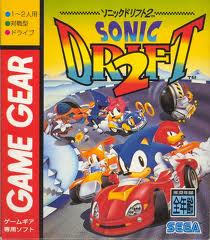
Sonic Drift 2, released in Europe as Sonic Drift Racing, is a kart racing video game by Sega for the Game Gear. The sequel to Sonic Drift, it was released in Japan and Europe in April 1995 and in North America in November 1995. It added three characters: Knuckles, Fang the Sniper, and Metal Sonic, and marked the first time the last two were playable characters. Sonic Drift 2 was later released worldwide as part of Sonic Adventure DX in 2003 and the compilation game Sonic Gems Collection in 2005. It was released again in 2023 as part of Sonic Origins Plus.
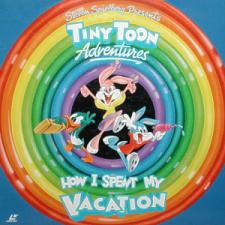
Tiny Toon Adventures: How I Spent My Vacation is a 1992 American animated comedy film from Warner Bros. Animation and Amblin Entertainment, originally intended for theatrical exhibition. Featuring the regular characters from the Fox Kids animated television program Tiny Toon Adventures, the plot follows their summer vacation from school, mainly focused on Babs and Buster going downriver, Plucky and Hamton going to a world-famous amusement park, and Fifi in search of her favorite movie star.
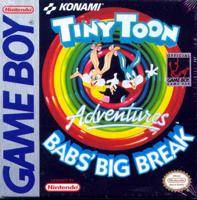
Tiny Toon Adventures: Babs' Big Break is the first Tiny Toon Adventures game released on the Nintendo Game Boy. It was released in 1992 and was developed and published by Konami.
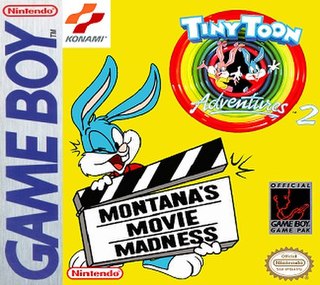
Tiny Toon Adventures: Montana's Movie Madness is the second Tiny Toon Adventures game released on the Nintendo Game Boy. It was released in 1993 and was developed and published by Konami. It was released in Japan as Tiny Toon Adventures 2: Buster Bunny no Kattobi Daibouken.
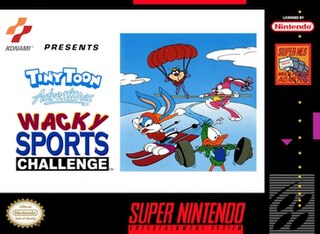
Tiny Toon Adventures: Wacky Sports Challenge is a sports video game. The game was released in 1994 for the Super Nintendo Entertainment System and developed and published by Konami. It is based on the American children’s television series, Tiny Toon Adventures. It is one of the few SNES games to feature an SNES Multitap as a useable controller.

Tiny Toon Adventures: Buster's Hidden Treasure is the first Tiny Toon Adventures-based game released on the Sega Genesis. It was released in 1993 and developed and published by Konami. The game was not released in Japan, but was released in South Korea, where it was simply called Tiny Toons Adventures.

Tiny Toon Adventures: Wacky Stackers is the first Tiny Toon Adventures video game released on the Nintendo Game Boy Advance. It was released on December 30, 2001 and was developed by Warthog and published by Conspiracy Games. It is also the first puzzle-style game for the franchise. The game features several characters from the television series, including: Buster Bunny, Montana Max, Elmyra Duff, Furrball, Babs Bunny, Plucky Duck, Gogo Dodo and Dizzy Devil.

Conspiracy Entertainment is an American third-party developer and video game publisher, publishing games from smaller companies that would face difficulties distributing games themselves. The company has also developed a few games of its own.

Atod AB/LG Software AB was a video game developer located in Helsingborg, Sweden.

Looney Tunes: Acme Arsenal is an Action-adventure video game developed by Redtribe and published by Warner Bros. Interactive Entertainment for the Wii, Xbox 360, and PlayStation 2. A companion game for the Nintendo DS, Looney Tunes: Duck Amuck, was also simultaneously released.

Acme Animation Factory is an educational art and graphics video game released by Sunsoft in November 1994 for the Super Nintendo Entertainment System.



















